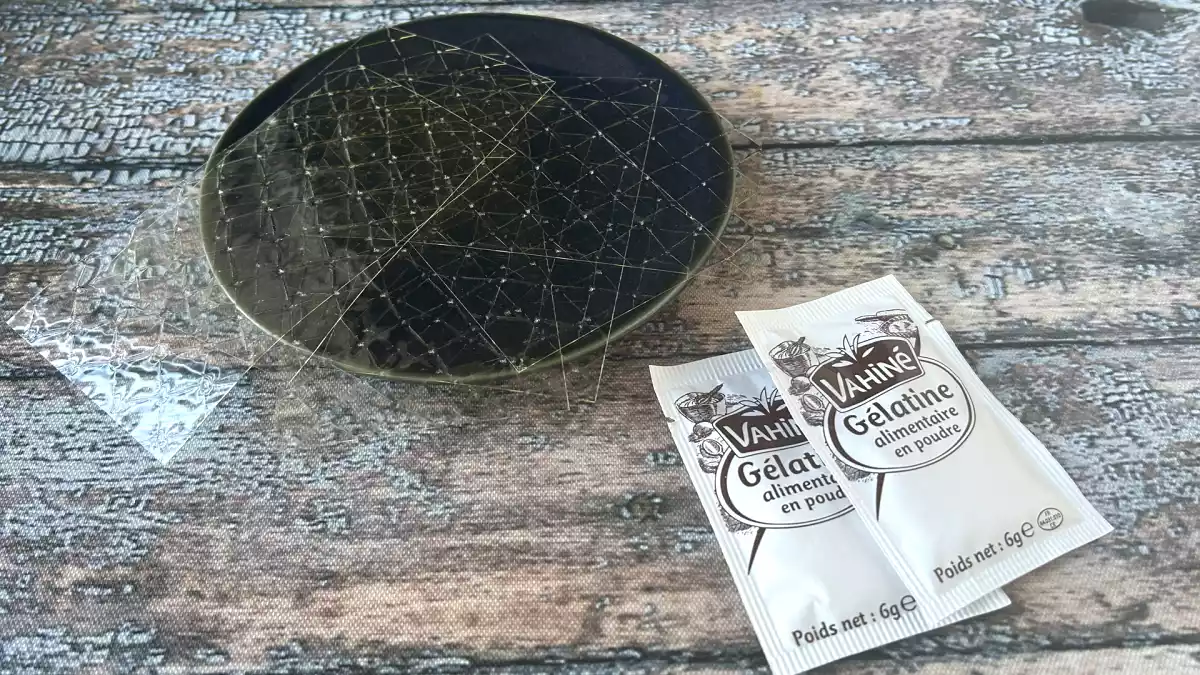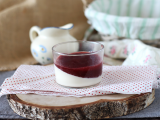Everything you should know about gelatin in cooking

Gelatin is a common ingredient in many desserts, but it is not always well known how to use it, what types exist or why it can fail. So we are going to tell you how to make the most of its properties.
A discreet protein with a lot of power
We might think that gelatine is one of those secondary ingredients that simply "do their job". However, in cooking and especially in baking, its behavior is far from simple. It is often the difference between a texture that melts in the mouth and an immovable block. To understand it, it is best to start at the beginning.
Gelatine is a natural protein derived from collagen, present in the skin and bones of animals such as pigs, cows and fish. It is obtained after a prolonged cooking process that extracts the collagen, which is then dried and transformed into the product we use in cooking. It is colorless, odorless and tasteless, which makes it especially useful as a neutral gelling agent.
In modern cuisine, gelatine is more alive than ever: it is used in classics such as panna cotta or mousse cake, it can be mixed with meringue to make marshmallows or homemade sponge cakes, and it plays a prominent role in molecular cuisine. It is also used in mousses, cold cakes and mirror glazes. But not all gelatines are the same, nor do they behave the same.
Types of gelatine and how to use them
Sheet gelatine: Sheet gelatine is the most appreciated in professional baking. Although somewhat more expensive, it is easy to dose and its gelling power is more predictable. To use it, it is hydrated in cold water for 5-10 minutes until it softens, drained and dissolved in a hot preparation (without boiling).
Powdered: More economical and practical for large quantities. It is hydrated with about 1 teaspoon (5 or 6 grams) of water for each gram of powdered gelatin and let it stand for 10-15 minutes. Before incorporating it, it is slightly heated until it dissolves. It is important not to heat it above 140°F/60 ºC, as it loses its gelling capacity.
What is bloom and why does it matter?
The "bloom"indicates the gelling strength of a gelatine. The higher this number, the firmer the texture it produces. Most commercial gelatines have between 125 and 250 bloom. The most common standard in baking is 200 bloom.
A high bloom gelatin requires less quantity to achieve the same effect than a low bloom one. In precise or professional recipes, this data is key, since the final result depends on it.
Key tips for working with gelatine
- Temperature: Never add gelatine to boiling liquids. Ideally, integrate it when the liquid is lukewarm (about 120-140°F/50-60 ºC).
- Rest: Desserts with gelatine need cold and time to reach the desired texture. Ideally they should be refrigerated for at least 4 hours, better still overnight.
- Readjust: If you overdo it with the gelatin and the result is too firm, you can melt it again (without boiling), add a little liquid and let it cool down again.
- Final texture: The gelatin continues to stabilize the dessert even after cooling. Do not rush when unmolding or serving.
Did you know that gelatin cannot be set with fresh pineapple? Pineapple (just like kiwi, mango or papaya) contains an enzyme called bromelain, which breaks down the proteins responsible for the gelatin to solidify. Therefore, if you use natural, uncooked pineapple in a recipe with gelatin, the dessert will not set. However, by heating the fruit or using canned pineapple, the enzyme is inactivated and no longer interferes with the process.
Vegetable alternatives to gelatin
For those who follow a vegan diet or are looking for plant-based alternatives, there are very effective substitutes for traditional gelatin. Agar-agar, extracted from red algae, is probably the best known: it is activated by heat and offers a firm, transparent texture. Another option is carrageenan, also derived from algae, which is used mainly in vegetable dairy products because of its ability to thicken and stabilize. Both alternatives are versatile and allow very similar results to be obtained without resorting to animal-derived ingredients.
How about you?
Do you usually use gelatine at home or does it intimidate you? Do you prefer the sheets or the powder? Have you ever had a mousse that was as hard as a brick? Tell us about your experience in the kitchen with this ingredient that, although discreet, is a must in the kitchen.
You may also be interested in:
 Patricia González
Patricia González

Comments